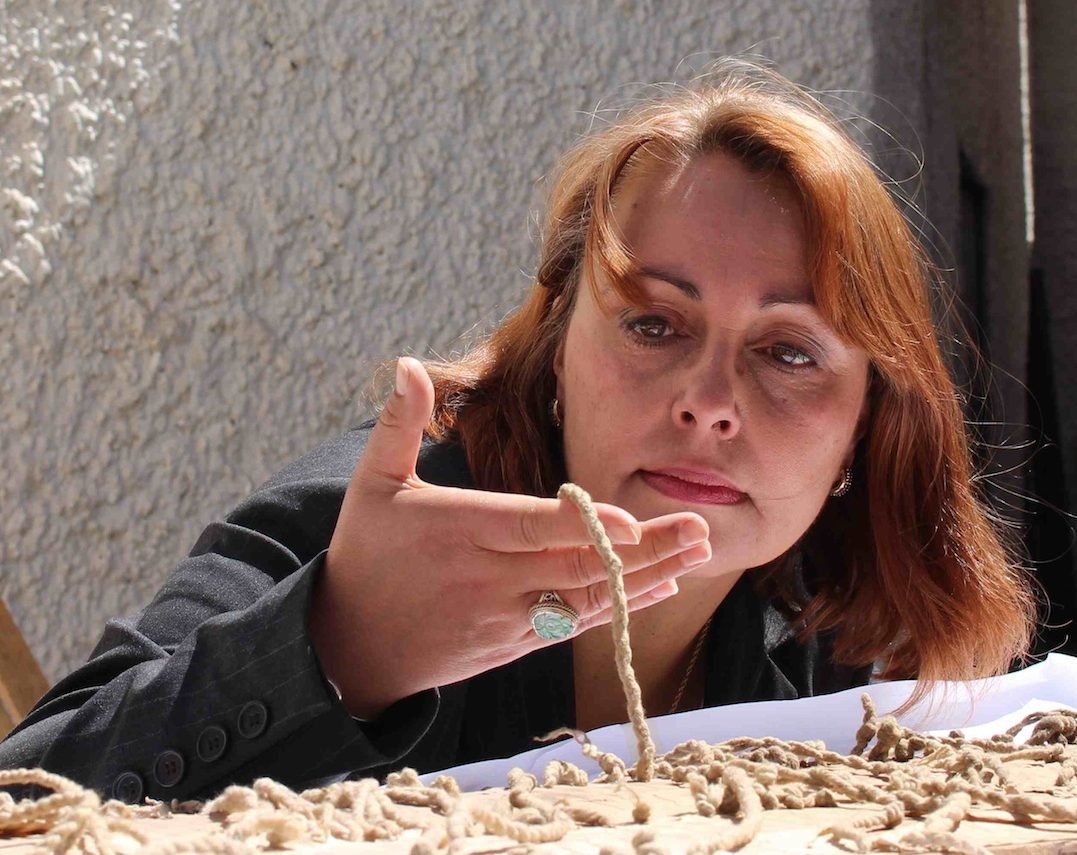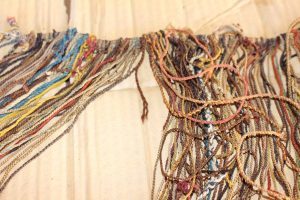A boffin anthropologist at the University of St Andrews has partially unravelled a lost Incan language written in animal hair.
Dr Sabine Hyland managed to decipher information contained in twisted chords called khipus, in which records were kept using knots of coloured fibres from animals such as alpacas, llamas and deer.
Her exciting discovery has the potential to shed light on the mysterious South American civilisation of the Incas.
So far she has phonetically deciphered two lineage names after being granted the privilege of examining two khipus from the remote village of San Juan de Collata in the Peruvian Andes.
Village authorities invited Hyland to examine their closely guarded khipus, which were created in the 18th Century as letters exchanged by local leaders in a revolt against Spanish authority.
Dr Hyland has now discovered that the khipus, sometimes known as talking knots, were used in a logosyllabic system like Classic Mayan, where each logo represents a phonetic syllable.
This is the first evidence that the Incas, which can also be spelled Inkas, possessed phonetic writing.
“It had already been established that the khipus were used by the Inkas to record numerical accounts, but until recently there was no evidence they had been used to record narratives,” said Dr Hyland.
The Collata khipus, as they are known, contrast sharply with the regional accounting khipus.
And they point to a widespread, shared writing system used in the Huarochiri province, east of Lima, in the 18th Century.
Dr Hyland added: “Analysis of the khipus revealed they contain 95 different symbols, a quantity within the range of logosyllabic writing systems, and notably more symbols than in regional accounting khipus.
“At the end of each khipu, three-cord sequences of distinct colours, fibres and ply direction appear to represent lineage names.
“The Collata khipus express syllables in a profoundly Andean fashion, using differences among the fibres of various animals, such as vicuña, alpaca and deer to indicate meaning.
“The reader must often feel the cords by hand to distinguish the fibre sources of these three-dimensional texts.”






